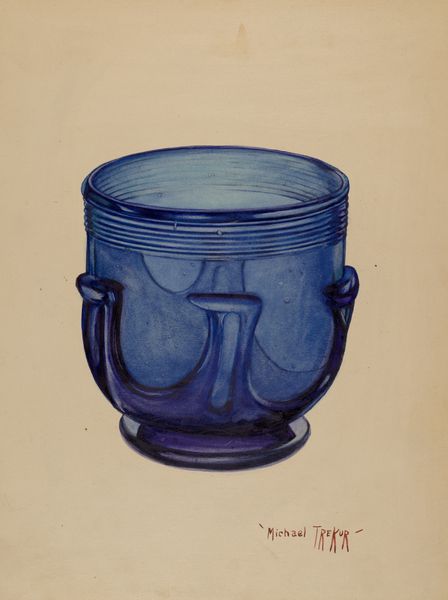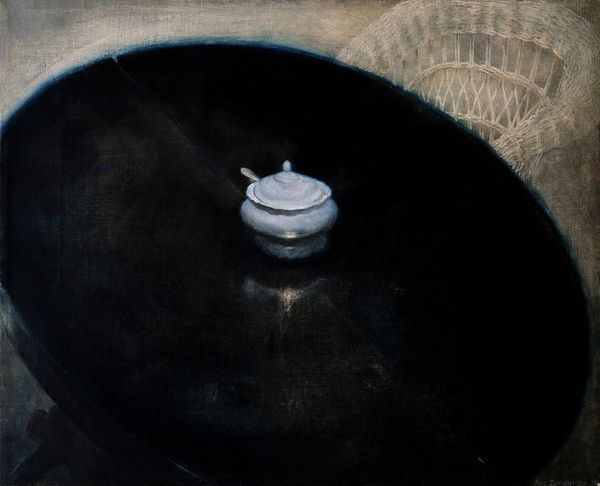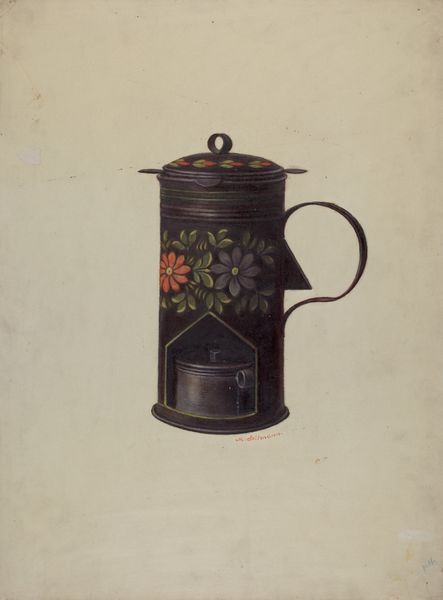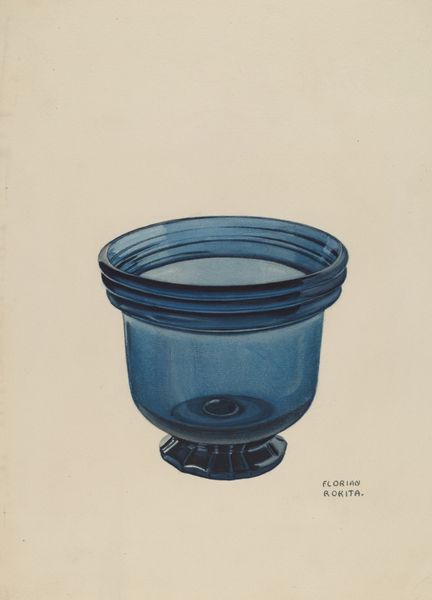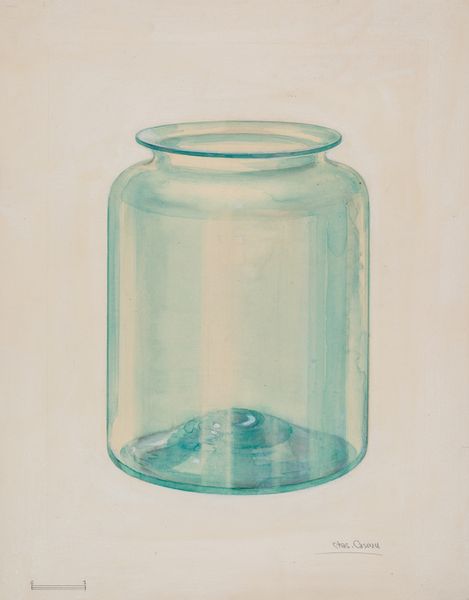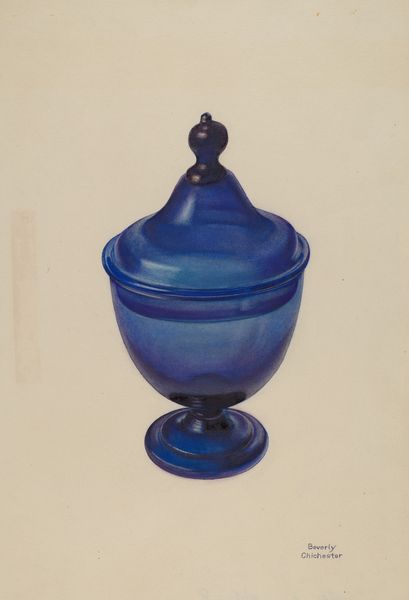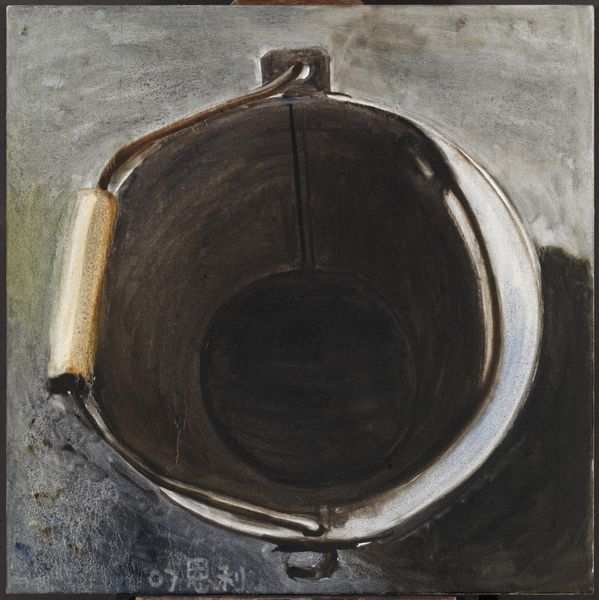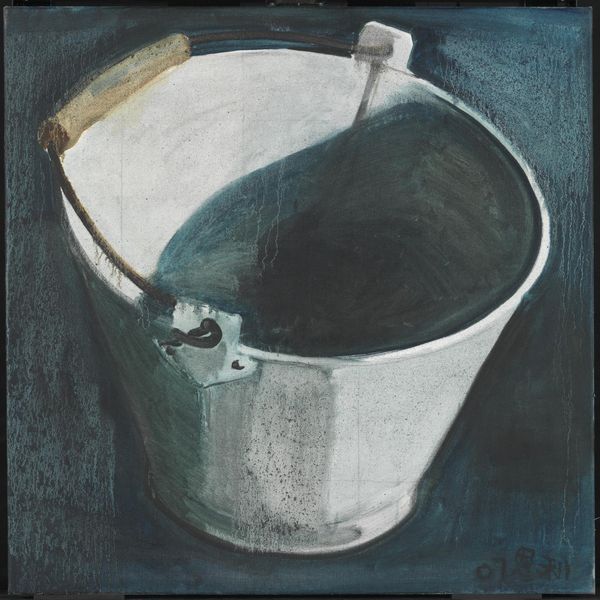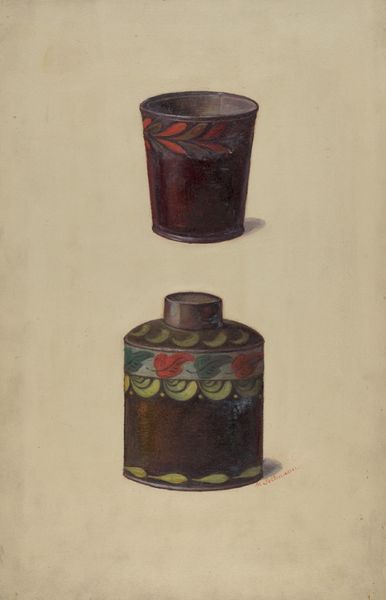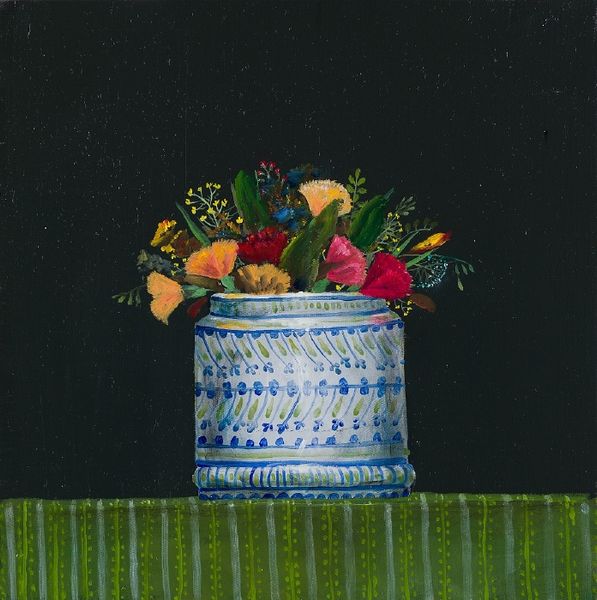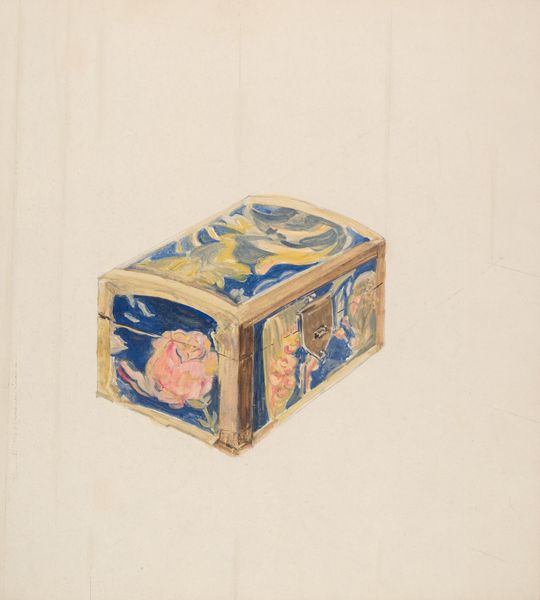
drawing, watercolor
#
drawing
#
caricature
#
charcoal drawing
#
watercolor
#
white focal point
#
portrait drawing
#
watercolour illustration
#
decorative-art
#
watercolor
#
realism
Dimensions: overall: 35 x 27.9 cm (13 3/4 x 11 in.) Original IAD Object: 3" in diameter; 2" high
Copyright: National Gallery of Art: CC0 1.0
Curator: Here we have "Child's Toy Iron Kettle," a watercolor and charcoal drawing by William O. Fletcher, dating from around 1937. Editor: My first thought is how much care and precision went into rendering this simple object. It has such a humble charm. Curator: Indeed. The piece reflects a broader trend in the decorative arts during that period, a kind of nostalgic realism that looked back to simpler times. We see it manifested in many WPA projects from the era. There was a political implication to representing everyday, often overlooked objects, in that it celebrated the dignity of the common person and the value of domestic life amidst the hardships of the Depression. Editor: I agree. And let's not overlook the materiality of it. We're seeing a representation of a child’s toy—made from iron, something industrially produced and perhaps enameled—rendered with a very different set of materials: watercolor and charcoal. The artist’s labor transforms the mass-produced object into something precious, handcrafted. And those little floral motifs on the kettle itself... it adds another layer to it! Someone took the time to add their own artistic flair to this functional, if miniature, object. Curator: Precisely! The addition of flowers brings a human, personalized touch to what might otherwise be seen as merely utilitarian. It also plays on notions of the picturesque, placing industry alongside ideas of pastoral innocence. The object and its rendering highlight the roles gender, labor, and consumerism played within society. Editor: I'm also struck by the technique. Fletcher meticulously captures the surface qualities—the light reflecting off the dark enamel, the rough texture of the charcoal. This reflects a fascination with representing materiality, an attempt to understand and celebrate the things we use daily. Curator: A very perceptive point. And remember, this was made during the Depression, so representing accessible beauty in simple, affordable objects would have resonated powerfully with a wide audience. Editor: Looking closely really does make you think about who made that little kettle, who decorated it with flowers, and of course, who played with it. And now, what is it worth beyond its material qualities? Curator: A testament to everyday creativity. The humble kettle becomes a focal point, transformed by social forces and artistic vision into something truly resonant. Editor: Exactly, it pushes us to look beyond inherent value and into social worth. It all connects: material, making and our own experience with it.
Comments
No comments
Be the first to comment and join the conversation on the ultimate creative platform.
